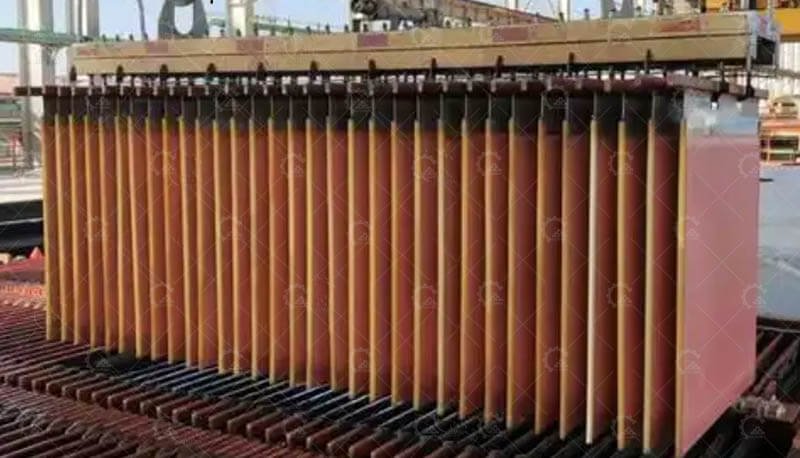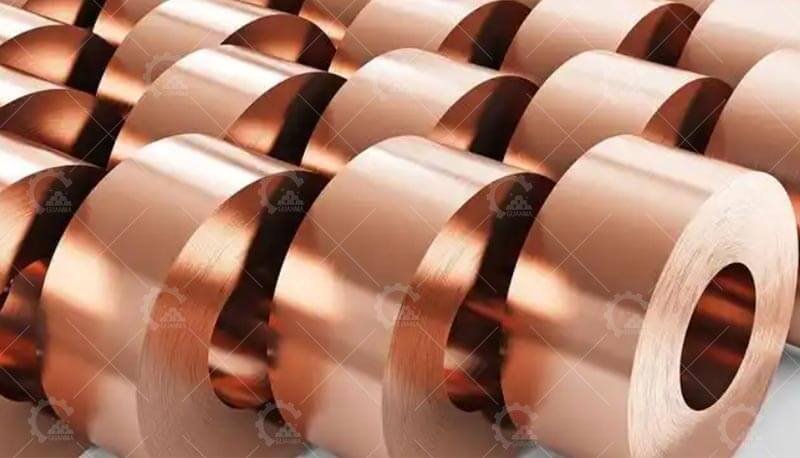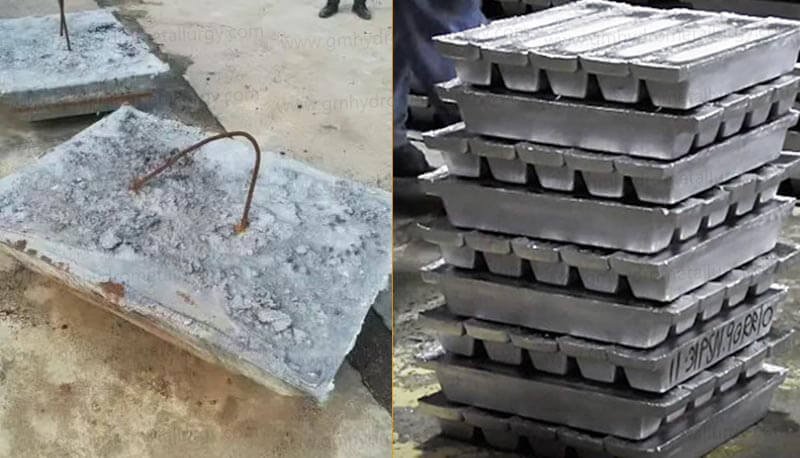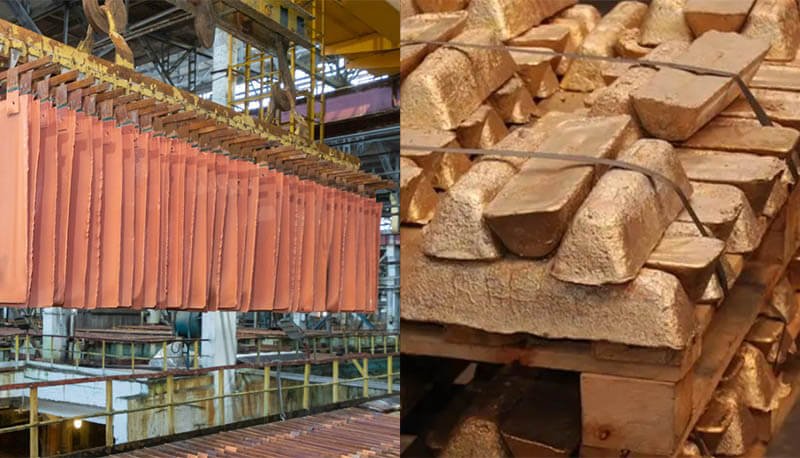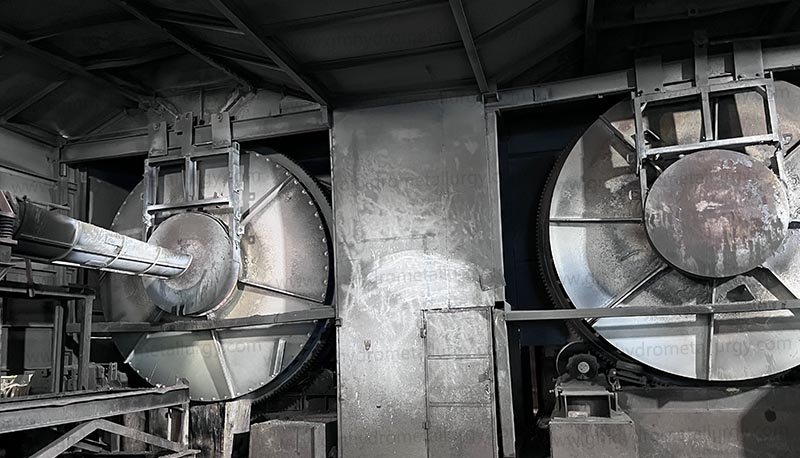Understanding the fundamental differences between rolled copper and electrolytic copper is crucial for engineers, procurement specialists, and manufacturers sourcing materials for demanding applications. Choosing the right type impacts performance, longevity, and even operational costs in related industries like lead refinery cost optimization.
1. Core Distinction: Origin Defines All
Electrolytic Copper (ETP Copper – Electrolytic Tough Pitch)
This is essentially pure copper, typically 99.90% to 99.99% Cu. Produced via electrolytic refining, impure copper anodes dissolve, and pure copper ions deposit onto starter cathodes. This meticulously removes impurities like sulfur, iron, lead, arsenic, and precious metals. The result? High electrical conductivity and excellent ductility.
Rolled Copper
This refers not to purity, but to a form and process. Rolled copper starts with a cast copper shape (like a large slab or billet, often made from ETP or other grades). This solid block undergoes intense mechanical deformation (hot rolling and/or cold rolling) between heavy rollers. This dramatically alters its structure, enhancing strength, hardness, and dimensional consistency while reducing thickness.
2. Manufacturing Process: From Cathode to Coil
Electrolytic Copper Production
1. Smelting: Copper ore concentrates are melted.
2. Converting: Impurities form slag, creating blister copper (~98-99% Cu).
3. Fire Refining (Anode Casting): Blister copper is further purified and cast into thick anode plates.
4. Electrorefining: Anodes are suspended in an acidic copper sulfate electrolyte. Direct current dissolves copper from the anode. Pure copper ions migrate and deposit onto thin stainless steel or copper starter sheets (cathodes). Impurities either dissolve into the electrolyte or fall as anode slimes (containing valuable metals like gold, silver, selenium – critical for recovering precious metals and managing overall lead refinery cost structures).
5. Cathode Harvesting: Pure copper cathodes are stripped and are the primary product.
Rolled Copper Production
1. Melting & Casting: Copper cathodes (often ETP) are remelted in a shaft furnace or induction furnace. The molten copper may be degassed and have trace elements adjusted. It’s then continuously cast into thick slabs or billets.
2. Hot Rolling: The slab is heated above its recrystallization temperature (~700-900°C) and passed through successive rolling stands, reducing thickness significantly and forming a continuous hot strip.
3. Pickling: The hot-rolled strip is cleaned in acid to remove oxide scale.
4. Cold Rolling: The strip is further reduced in thickness at room temperature. This dramatically increases strength and hardness through work hardening and refines the grain structure. Multiple passes through rolling mills with intermediate annealing may be used to achieve the desired properties and final gauge.
5. Annealing: Heat treatment softens cold-worked copper, restoring ductility.
6. Finishing: Final processes include slitting, leveling, surface treatments (oiling, passivation), and coiling.
3. Key Properties & Why They Matter
Electrolytic Copper (ETP – C11000)
Purity: Very High (99.90%+ Cu).
Conductivity: Excellent electrical and thermal conductivity (typically 100-101% IACS).
Ductility: Highly ductile and malleable in the annealed state.
Strength: Relatively soft in annealed form; moderate strength when hard-drawn.
Surface: Cathode surface is rough and knobby. Needs further processing for most uses.
Primary Form: Cathodes (thick plates).
Rolled Copper (e.g., Sheet, Strip, Foil – C11000 for ETP-based)
Purity: Inherited from the starting material (often ETP, but can be oxygen-free or other alloys).
Conductivity: Slightly lower than pure annealed ETP due to work hardening and grain refinement, but still very high. Annealing restores most conductivity.
Ductility: Reduced by cold working; restored by annealing.
Strength & Hardness: Significantly increased by cold rolling. Offers excellent mechanical properties for structural applications.
Surface: Smooth, bright, uniform finish. Precise dimensional tolerances.
Form: Thin, flat products (sheet, strip, foil), rods, bars.
4. Application Showdown: Matching Material to Need
Electrolytic Copper (Cathode) is Best For:
Raw material feedstock for producing wire rods, rolled products (sheet, strip, foil), cast products, copper alloys (brass, bronze), copper chemicals, and copper powder.
Essential for electrolytic copper refining itself (starter sheets).
Direct use in large grounding systems (sometimes).
Rolled Copper (Sheet, Strip, Foil) is Essential For:
Electrical Components: Busbars, connectors, transformer windings, electromagnetic shielding.
Electronics: Printed Circuit Boards (PCBs), leadframes, contacts, flexible circuits (thin foil).
Construction: Roofing, flashing, architectural facades, gutters.
Industrial: Heat exchangers, gaskets, washers, springs (beryllium copper strip).
Consumer Goods: Cookware, decorative items.
5. The Lead Refinery Cost Connection
While distinct from copper refining, lead refinery cost structures share similarities in electrolytic processes. Both rely on efficient electrorefining to achieve high purity. Optimizing the recovery of valuable by-products (like precious metals from copper anode slimes or antimony/bismuth from lead refining) is paramount for economic viability. Understanding the high purity demands and process intricacies of electrolytic copper refining provides valuable context for appreciating the challenges and cost optimization strategies within lead smelting and refining operations, particularly concerning energy consumption, reagent use, and by-product revenue.
Choosing Wisely
Don’t confuse the base material (electrolytic copper cathode) with the processed form (rolled copper products). Electrolytic copper defines purity at the source, while rolling transforms it into versatile, high-strength forms. For industries managing complex refining like lead production, insights into copper refining efficiency directly inform broader metallurgical processing cost strategies.



